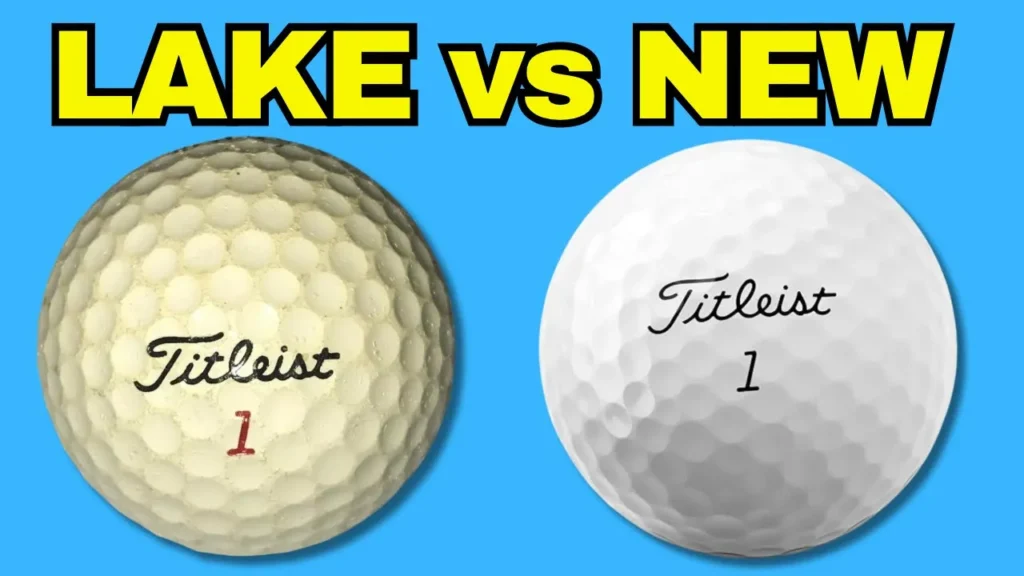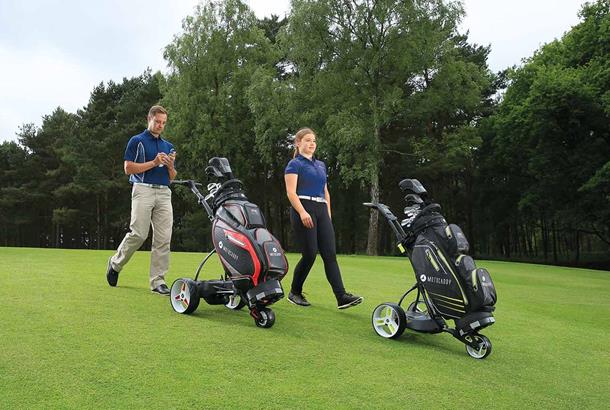Left Hand Low Vs Conventional Putting – What’s The Better Option
As golfers, we are always looking for the best technique to help us lower our score. One of the biggest debates in the world of putting is whether to use the left hand low or conventional grip. In this article, we will dive into the pros and cons of each grip and help you decide which one is right for you.

Before we dive into the specifics of each grip, let’s go over the basics.
There are two types of putter grips that are commonly used in golf – the left hand low grip and the conventional grip.
The conventional grip, also known as the reverse overlap grip, is the traditional way of holding a putter. It involves placing the left hand on top of the grip and the right hand below it. This grip is used by the majority of golfers.
On the other hand, the left hand low grip, also known as the cross-handed grip, involves placing the left hand below the right hand on the grip. This grip has become increasingly popular over the years, especially among professional golfers.
In the following sections, we will take a closer look at the advantages and disadvantages of each grip.
What Is The Left Hand Low Grip
The left hand low grip, as mentioned earlier, involves placing the left hand below the right hand on the grip. This grip has become popular among golfers because it helps to eliminate wrist movement during the putting stroke. The left hand low grip is also known as the cross-handed grip, as well as the “claw” grip, lets explore some of the advantages and disadvantages.

Left Hand Low: What Are The Advantages
Improved Accuracy
One of the biggest advantages of the left hand low grip is that it can improve your accuracy on the greens. By eliminating wrist movement during the putting stroke, you can keep the putter face square to the target line, which can help you hit your putts more consistently.
More Control
The left hand low grip can also provide you with more control over your putter. Since your left hand is lower on the grip, it has more control over the putter face, which can help you maintain a more consistent stroke.
Less Tension
The left hand low grip can also help to reduce tension in your hands and arms during the putting stroke. By eliminating wrist movement, you can create a smoother and more relaxed stroke, which can lead to better results on the greens.

Left Hand Low: What Are The Disadvantages
Uncomfortable at First
One of the biggest drawbacks of the left hand low grip is that it can feel uncomfortable at first. Since it is not the traditional way of holding a putter, it may take some time to get used to.
Limited Distance Control
The left hand low grip can also limit your distance control on longer putts. Since your left hand is lower on the grip, it can be difficult to get enough power on longer putts, which can lead to coming up short on the greens.
What Is The Conventional Putter Grip
The conventional putter grip, as mentioned earlier, is the traditional way of holding a putter. It involves placing the left hand on top of the grip and the right hand below it.
Conventional Putter Grip: What Are The Advantages
More Distance Control
One of the biggest advantages of the conventional grip is that it can provide you with more distance control on longer putts. Since your right hand is lower on the grip, it has more control over the speed of the putter head, which can help you hit longer putts more accurately.
Comfortable and Familiar
The conventional grip is also comfortable and familiar to most golfers. Since it is the traditional way of holding a putter, it is what most golfers learned when they first started playing the game.
Better Feel
The conventional grip can also provide you with a better feel for the putter head. Since your right hand is lower on the grip, it has more control over the putter face, which can help you feel the impact of the ball more clearly.

Conventional Putter Grip: What Are The Disadvantages
More Wrist Movement
One of the biggest drawbacks of the conventional grip is that it can lead to more wrist movement during the putting stroke. This can cause the putter face to open or close, which can lead to inconsistent results on the greens.
Less Control
The conventional grip can also provide you with less control over the putter face. Since your right hand is lower on the grip, it has less control over the putter face, which can lead to less consistency in your putting stroke.
Left Hand Low Vs Conventional Putter Grip
So which grip is better – left hand low or conventional? The answer is not straightforward, as it depends on the individual golfer.
Who Should Use Left Hand Low?
The left hand low grip is best for golfers who struggle with wrist movement during their putting stroke. It can also be beneficial for golfers who tend to miss putts to the right, as it can help to keep the putter face square to the target line.
Who Should Use Conventional?
The conventional grip is best for golfers who prefer a more traditional approach to putting. It can also be beneficial for golfers who struggle with distance control on longer putts.
What’s Better For High Handicapper?
For high handicappers, the left hand low grip may be the better option. This is because it can help to eliminate wrist movement and provide more control over the putter face, which can lead to more consistent results on the greens.
What’s Better For Pros?
For professionals, both grips can be effective, and it often comes down to personal preference. However, many professional golfers have switched to the left hand low grip in recent years, as it has become increasingly popular on the PGA Tour.
Which Pros Use Each?
Some of the notable professional golfers who use the left hand low grip include Phil Mickelson, Jordan Spieth, and Justin Rose. On the other hand, some professional golfers who use the conventional grip include Tiger Woods, Rory McIlroy, and Brooks Koepka.

What Else To Take Into Consideration
When deciding between the left hand low and conventional grip, there are other factors to consider as well. These include the type of putter you use, the lie angle and loft of the putter, the shaft length and grip size, and any other personal preferences you may have.
Claw Grip Vs Left Hand Low
The claw grip is another putting grip that has become popular in recent years. It involves placing the left hand low on the grip and the right hand in a claw-like position. While similar to the left hand low grip, it is a slightly different technique and may be better suited to certain golfers.
Claw Grip Vs Conventional Putter Grip
Similarly, the claw grip can also be compared to the conventional grip. While it provides a different grip style, it still involves placing the left hand on top of the grip and the right hand below it.
Best Putter For Left Hand Low Grip
If you decide to use the left hand low grip, it is important to find a putter that is well-suited to this technique. Some of the best putters for the left hand low grip include the Odyssey O-Works Red #7, the TaylorMade Spider Tour Black, and the Scotty Cameron Select Newport.
Best Putter For Conventional Putter Grip
Similarly, if you decide to use the conventional grip, you will want to find a putter that is comfortable and provides good feel. Some of the best putters for the conventional grip include the Ping Vault 2.0, the Titleist Scotty Cameron Phantom X, and the TaylorMade TP Patina.
The Ping Vault 2.0 putter provides excellent feel and touch, thanks to its precision-milled design and soft carbon steel construction. Its custom-weighted sole plate allows for improved consistency on the greens.

The Titleist Scotty Cameron Phantom X putter features advanced alignment technology, making it easier to line up putts and improve accuracy. Its multi-material construction and strategic weight distribution provide a solid and stable feel.

The TaylorMade TP Patina putter offers a classic look and feel, with modern technology to improve performance. Its Pure Roll insert promotes better forward roll and improved distance control, while its multi-material construction enhances stability and feel.

Left Hand Low Vs Conventional Putting: Conclusion
In conclusion, both the left hand low and conventional grips can be effective for putting, and the best option for you will depend on your personal preferences and needs. We hope that
this article has helped to provide a comprehensive overview of each grip, along with their pros and cons. By considering the factors outlined in this article, you can make an informed decision and choose the grip that works best for your game.
Remember, putting is a crucial part of the game of golf, and finding the right grip can make all the difference in lowering your score. Keep practicing and experimenting with different techniques until you find the grip that helps you putt your best. Good luck out there on the greens!
Left Hand Low Vs Conventional Putting: FAQ’s
While the left hand low grip can be beneficial for many golfers, it may not be suitable for everyone. It is best for golfers who struggle with wrist movement and tend to miss putts to the right
Yes, the conventional grip can also provide good results on the greens, and is a comfortable and familiar option for many golfers.
It depends on the individual golfer, but the left hand low grip may be a good option for beginners who struggle with wrist movement and consistency in their putting stroke.
Yes, the claw grip is a similar technique to the left hand low grip, and may be better suited to certain golfers.
Yes, the type of putter you use can affect your grip and technique. It is important to choose a putter that is well-suited to your grip style.
Yes, the shaft length and grip size can affect your grip and comfort on the greens. It is important to choose a putter with the right specifications for your needs.
Yes, some golfers may choose to switch between grips depending on the situation or their personal preferences.
Yes, many professional golfers, including Tiger Woods, Rory McIlroy, and Brooks Koepka, use the conventional grip. However, the left hand low grip has become increasingly popular on the PGA Tour in recent years.
If you’re still looking to improve your game why not check out our other articles on the Best Golf Balls, or the best golf gloves. Alternatively check out or equipment reviews with the best golf irons and the best drivers.




